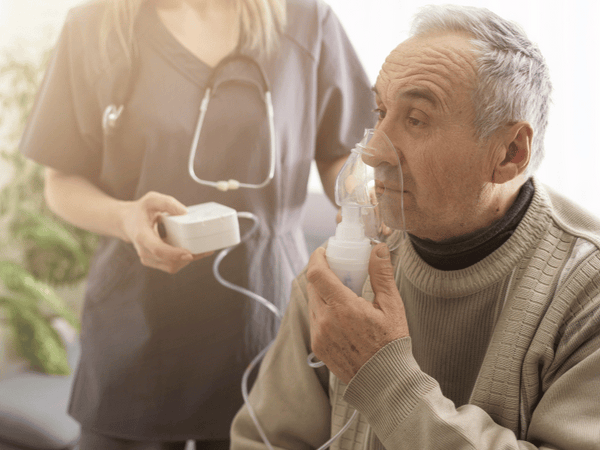In the ever-evolving landscape of cannabis science, the discovery and exploration of medicinal and cannabis plants' variety and cannabinoids have continued to intrigue researchers and enthusiasts alike. Among the myriad compounds found within the cannabis plant, one particular cannabinoid has recently piqued the curiosity of scientists and consumers of medicinal cannabis varieties alike: THC-P.
As our understanding of cannabinoids deepens, so too does our appreciation for the complexities and nuances of these chemical compounds. THC-P, short for delta-9-tetrahydrocannabiphorol, represents a fascinating addition to the cannabinoid family, offering unique properties and potential benefits that distinguish it from its more well-known cousin, delta-8 THC (tetrahydrocannabinol).
In this blog post, we embark on a journey to unravel the mysteries surrounding THC-P. From its chemical structure to its reported effects and potential therapeutic uses, we will delve into the depths of this enigmatic cannabinoid, shedding light on its significance in the realm of health and wellness.
Join us as we explore the science, research, and implications of THC-P, gaining insight into the next frontier of cannabinoid discovery and understanding. Whether you're a seasoned cannabis connoisseur or simply curious about the latest advancements in cannabinoid science, this exploration of THC-P promises to be both enlightening and thought-provoking.
What is THC-P?

In the expansive world of cannabinoids, THC-P emerges as a relatively recent discovery, captivating the attention of researchers and cannabis enthusiasts alike with its intriguing properties. As a potent psychoactive cannabinoid, THC-P holds immense promise for unlocking new avenues of abundant cannabinoid in both therapeutic applications and recreational use. However, amidst the excitement surrounding this compound, questions naturally arise: What exactly is THC-P, and how does it differentiate itself from the more familiar delta-8 THC?
At its core, THC-P, or Δ9-tetrahydrocannabiphorol, represents a naturally occurring compound found within the cannabis plant. Its recent emergence on the scientific scene has sparked considerable interest due to its potency and potential effects on the human body. Unlike delta-8 THC, which is a more well-known cannabinoid, THC-P distinguishes itself as the most abundant cannabinoid is through its chemical structure and interaction with the body's endocannabinoid system.
While both THC-P and delta 8 THC share similarities in their psychoactive properties, THC-P is believed to possess even greater potency, leading to more pronounced effects upon consumption. Additionally, subtle differences in their molecular structures contribute to distinct pharmacological profiles, potentially resulting in variations in their physiological effects and therapeutic potential.
In essence, THC-P represents a fascinating frontier in cannabinoid research, offering a tantalizing glimpse into the intricate interplay between cannabinoids and the human body. As scientists delve deeper into understanding its mechanisms of action and potential applications, THC-P holds the promise of reshaping our understanding of cannabis and its myriad effects on human health and wellness.
Definition and Explanation of THC-P
THC-P, or Δ9-tetrahydrocannabiphorol, is a naturally occurring cannabinoid found within the cannabis plant. Like traditional THC, THC-P interacts with the endocannabinoid system in the human body. This cannabinoid is accountable for the psychoactive effects experienced after consuming a marijuana product and is currently federally illegal and illegal in most states.
However, what sets THC-P and delta-9-THC apart is its chemical structure and potency. THC-P is believed to be significantly more potent than delta-9THC and 8 THC, with some studies suggesting that it may be up to 30 times more potent than delta-9THC, its better-known counterpart.
Chemical Structure and Properties of THC-P
Structurally, THC-P shares similarities with traditional THC, possessing a similar arrangement of carbon, hydrogen, and oxygen atoms. However, subtle differences in its molecular structure contribute to its unique properties and effects. THC-P's molecular structure includes a longer alkyl side chain that extends from the bottom of the largest part of the molecule. The oversized side chain contains seven carbon atoms; whereas Delta-9 THC only contains five.
THCP is an organic cannabinoid (or phytocannabinoid) very similar to delta 9 THC, which is the most abundant cannabinoid in most strains of marijuana. Although first identified in a particular marijuana strain, THCP can also be produced in a lab by chemically manipulating CBD extracted from legal hemp plants.
One notable feature of THC-P is higher binding affinity, its ability to bind more tightly to cannabinoid receptors in the brain and body compared to delta 8 THC. This enhanced, higher affinity for cannabinoid receptors may explain its reported potency and distinct effects.
As researchers continue to unravel the intricacies of THC-P, a deeper understanding of its chemical structure and properties promises to shed light on its potential therapeutic applications and implications for human health.
Potential Benefits of THC-P
Exploration of reported effects
Despite being in its nascent stages, the exploration of THC-P has already yielded intriguing insights. While the body of research remains in its infancy, initial observations hint at a diverse array of potential benefits linked to this cannabinoid. These reported effects span across both physical and mental dimensions of well-being, presenting tantalizing prospects for therapeutic applications and wellness enhancement.
Reported Effects of THC-P
Analgesic Properties

Emerging research suggests that THC-P harbors significant potential as an analgesic agent capable of providing robust pain relief. These findings hold particular promise for individuals grappling with chronic pain conditions, where conventional treatments may fall short.
By delving into the intricate mechanisms of pain modulation, THC-P unveils a pathway towards alleviating discomfort and enhancing quality of life for those burdened by persistent pain.
Appetite Stimulation

Much like its well-known counterpart THC, THC-P also exhibits the characteristic of stimulating appetite, often colloquially termed as experiencing the "munchies." This effect holds significant potential for individuals grappling with appetite suppression, whether as a result of medical conditions or the side effects of treatments.
By igniting a desire for food consumption, THC-P offers a ray of hope for those facing challenges in maintaining adequate nutrition and sustenance, thereby potentially bolstering their overall well-being and resilience in the face of health adversities.
Neuroprotective Effects

Recent investigations into THC-P have unveiled intriguing possibilities regarding its neuroprotective capabilities. Preliminary findings indicate that THC-P may possess the capacity to shield nerve cells from damage and degeneration, thus presenting a promising avenue for combating neurodegenerative disorders like Alzheimer's and Parkinson's disease.
By potentially slowing down the progression of these debilitating conditions, THC-P offers hope for individuals grappling with neurological challenges as well as for researchers striving to unlock effective treatments for these complex disorders.
Anti-inflammatory Effects

The burgeoning exploration into THC-P has illuminated its potential as an anti-inflammatory agent, offering a ray of hope for individuals plagued by conditions characterized by chronic inflammation, such as arthritis and inflammatory bowel disease.
By harnessing its anti-inflammatory properties, THC-P holds promise in quelling the inflammatory cascade that underlies these debilitating conditions, potentially mitigating symptoms and improving quality of life for affected individuals.
This emerging avenue of research not only offers hope for more effective treatments but also underscores the multifaceted therapeutic potential of cannabinoids in addressing a diverse range of health challenges.
Antiemetic Properties

Emerging evidence points to the potential of THC-P as an antiemetic agent, offering a glimmer of hope for individuals grappling with the distressing symptoms of nausea and vomiting induced by chemotherapy or other medical treatments.
By exerting its antiemetic properties, THC-P may help alleviate these debilitating side effects, providing much-needed relief and improving the overall quality of life for patients undergoing rigorous medical interventions.
This potential therapeutic application underscores the importance of further research into the diverse effects of cannabinoids, paving the way for more effective and holistic approaches to managing treatment-related symptoms and enhancing patient well-being.
Medical Potential and Therapeutic Uses
Given its reported effects, THC-P holds promise for a wide range of medical applications. From pain management to appetite stimulation and beyond, the potential therapeutic benefits and potential of THC-P are a subject of growing interest and investigation within the scientific community.
As research continues to uncover the full spectrum of potential therapeutic benefits associated with THC-P, it is essential to approach its potential applications with careful consideration and scientific rigor. While early findings are promising, further studies are needed to fully elucidate the therapeutic effects of THC-P and its optimal use in clinical settings.
Research and Studies
Overview of existing research on THC-P
Despite being a relatively recent discovery, THC-P has already garnered significant attention from researchers seeking to unlock its therapeutic potential and understand its effects on the human body. While the body of research on THC-P is still growing, several key studies have provided valuable insights into its properties and potential applications.
Key Research Findings on THC-P
Initial Discovery
THC-P was first identified in a 1971 study led by researchers at Hebrew University in Jerusalem. The study, published in the journal Tetrahedron, described the isolation and characterization of THC-P from the cannabis plants and resin.
Potency Comparison
A groundbreaking study published in the journal Scientific Reports in 2020 compared the potency of THC-P with other cannabinoids, including THC and CBD. The study found that THC-P exhibited significantly greater potency than THC, with implications for its potential therapeutic use.
Mechanism of Action
Research published in the journal Pharmacology, Biochemistry, and Behavior has shed light on the mechanism of action of THC-P. The study suggested that THC-P may exert its effects through interactions with the body's endocannabinoid system, similar to other cannabinoids.
Therapeutic Potential
Preliminary research has explored the therapeutic potential of THC-P in various medical conditions, including chronic pain, neurodegenerative disorders, and chemotherapy-induced nausea and vomiting. While early findings are promising, further clinical trials are needed to validate these potential benefits.
Future Directions for Research
As interest in THC-P continues to grow, researchers are increasingly focused on elucidating its therapeutic effects, mechanisms of action, and potential applications in clinical practice. Future research directions may include:
-
Conducting clinical trials to evaluate the safety and efficacy of THC-P in specific medical conditions.
-
Investigating the pharmacokinetics of THC-P to optimize dosing regimens and delivery methods.
-
Exploring the synergistic effects of THC-P with other cannabinoids and pharmaceutical agents.
By advancing our understanding of THC-P through rigorous scientific inquiry, researchers aim to unlock its full therapeutic potential and pave the way for novel treatments that harness the power of cannabinoids for improved health and wellness.
Legal Status and Regulation
Current legal status of THC-P
While THC-P holds promise as a potentially beneficial cannabinoid, its legal status varies considerably depending on jurisdiction. The regulatory landscape surrounding THC-P is complex and evolving, with implications for both medical and recreational use.
Legal Status in Different Regions
United States
In the United States, THC-P falls under the umbrella of cannabis-derived compounds, which are subject to federal regulation under the Controlled Substances Act. As of now, THC-P is classified as a Schedule I controlled substance, meaning it is a controlled substance considered to have a high potential for abuse and no accepted medical use.
Canada
In Canada, the legal status of THC-P is governed by the Cannabis Act, which regulates the production, distribution, and sale of cannabis products. While the Cannabis Act permits the use of certain cannabinoids for medical purposes, THC-P is not currently approved for medical use in Canada.
European Union
In the European Union, the legal status of marijuana, cannabis plants, and THC-P varies among member states. While some countries have legalized the use of cannabis and marijuana plants for medical purposes, others maintain strict regulations on medicinal uses cannabis plants and variety of their derived compounds, including THC-P.
Regulatory Challenges and Considerations
The legal status of THC-P poses several challenges and considerations for policymakers, healthcare professionals, and consumers alike. These challenges include:
Regulatory Uncertainty
The evolving nature of cannabis regulations can create uncertainty for businesses and consumers seeking to navigate the legal landscape surrounding THC-P.
Access to Medical Use
Patients and healthcare providers may face barriers to accessing THC-P for medical purposes due to regulatory restrictions and a lack of approved pharmaceutical formulations.
Quality Control and Safety
In regions where THC-P is federally legal, ensuring quality control and safety standards for cannabis products is essential to protect public health and prevent unintended consequences.
Potential Impact on the Cannabis Industry
As regulations surrounding THC-P continue to evolve, the cannabis industry may experience both opportunities and challenges. The legalization of THC-P for medical or recreational use in certain jurisdictions could open up new markets and opportunities for cannabis businesses. However, regulatory barriers and compliance requirements may also present obstacles to market entry and expansion.
Overall, the legal status of THC-P remains a complex and dynamic issue, with implications for public health, industry development, and patient access to cannabinoid-based therapies. As policymakers and stakeholders grapple with these challenges, ensuring evidence-based regulation and informed decision-making will be crucial to maximizing the potential benefits of THC-P while mitigating potential risks.
Risks and Concerns
Potential side effects of THC-P
While THC-P holds promise as a potentially therapeutic cannabinoid, it is essential to recognize that its use may also be associated with certain risks and concerns. As with any substance, understanding the potential adverse effects of THC-P is crucial for informed decision-making and safe consumption.
Common Side Effects
Psychotropic Effects

Like THC, THC-P may produce psychotropic psychoactive effects, including euphoria, altered perception, and impaired cognitive function. These psychoactive effects can vary depending on individual tolerance and dosage.
Cardiovascular Effects

Some research suggests that synthetic cannabinoids alone, including THC-P, may have cardiovascular effects such as increased heart rate and blood pressure. These effects may pose risks for individuals with underlying cardiovascular conditions.
Psychological Effects

Prolonged or excessive use of THC-P may be associated with psychological effects such as anxiety, paranoia, and psychosis, particularly in susceptible individuals.
Respiratory Effects

If THC-P is consumed via inhalation (e.g., smoking or vaping), it may have respiratory effects similar to those of smoking cannabis, including irritation of the airways and increased risk of respiratory infections.
Safety Considerations
Dosage and Administration
Understanding the optimal dosage and administration of THC-P is essential for minimizing the risk of adverse effects. It is advisable to start with low doses and gradually titrate upwards to assess individual tolerance and response.
Interactions with Medications
THC-P may interact with certain medications, including prescription drugs and over-the-counter supplements. It is crucial to consult with a healthcare professional before using THC-P, especially if you are taking other medications.
Vulnerable Populations
Certain populations, such as pregnant or breastfeeding individuals, adolescents, and individuals with a history of substance abuse or mental health disorders, may be particularly vulnerable to the adverse effects of THC-P. Special caution should be exercised in these populations.
Health Implications and Precautions
As with any cannabinoid, the use of THC-P should be approached with caution and mindfulness of potential health implications. While research on THC-P is ongoing, it is essential to prioritize safety and responsible consumption practices to minimize risks and maximize potential benefits.
By being aware of the potential risks and concerns associated with THC-P, consumers can make informed decisions about its use and take appropriate precautions to ensure their health and well-being. Additionally, continued research and education on THC-P will be essential for advancing our understanding of its effects and optimizing its safe and responsible use.
How to Access THC-P
Availability of THC-P products
As interest in THC-P grows, consumers may be curious about how to access products containing this cannabinoid. However, accessing THC-P can be challenging due to various factors, including legal restrictions, product availability, and regulatory considerations. Here are some factors to consider when seeking out THC-P products:
Legal Restrictions and Limitations
Regulatory Framework
The legal status of THC-P varies depending on jurisdiction. In regions where cannabis products are legal, THC-P may be available for medical or recreational use, subject to specific regulations and restrictions under federal law.
Medical Use
In some jurisdictions, THC-P may be available for medical use through licensed healthcare providers or cannabis dispensaries. Patients seeking access to THC-P for medical purposes may need to obtain a prescription or medical authorization from a qualified healthcare professional.
Considerations for Consumers
Product Selection
When selecting THC-P products, consumers should prioritize reputable brands and products that have undergone third-party testing for quality and purity. This can help ensure the safety and reliability of the product.
Dosage and Administration
Understanding the optimal dosage and administration of THC-P is crucial for achieving desired effects while minimizing the risk of adverse reactions. Consumers should carefully follow dosing guidelines and start with low doses, especially if they are new to THC-P or cannabis products in general.
Consultation with Healthcare Professionals
Before using THC-P, particularly for medical purposes, consumers should consult with a qualified healthcare professional to assess their individual health needs and determine the appropriateness of THC-P as a treatment option. Healthcare professionals can provide personalized guidance and monitor for any potential adverse effects or interactions with other medications.
While accessing THC-P products may present challenges, informed consumers can navigate the landscape of cannabis products responsibly and safely. By staying informed about legal regulations, selecting high-quality products, and seeking guidance from healthcare professionals, individuals can make informed decisions about using THC-P for their health and wellness needs. As the regulatory framework surrounding cannabis evolves and research on THC-P continues to advance, access to THC-P products may become more accessible and streamlined for consumers in the future.
Conclusion
In conclusion, THC-P represents a fascinating addition to the growing body of research on cannabinoids, offering unique properties and potential benefits that distinguish it from other compounds found within the cannabis plant. From its enhanced potency to its reported therapeutic effects, THC-P holds promise as a novel therapeutic agent with implications for a wide range of medical conditions.
While research on THC-P is still in its early stages, preliminary findings suggest that this novel cannabinoid may offer pain relief, for conditions such as chronic pain, inflammation, and nausea, among others. However, it is essential to approach the use of THC-P with caution and mindfulness of potential risks and concerns, including psychotropic effects, cardiovascular effects, and interactions with medications.
As interest in THC-P continues to grow, it is crucial for policymakers, healthcare professionals, and consumers to prioritize evidence-based regulation, education, and responsible consumption practices. By fostering a deeper understanding of THC-P and its potential applications, we can harness the power of cannabinoids to improve health and wellness outcomes for individuals worldwide.
As research on THC-P progresses and regulatory frameworks evolve, it is likely that access to THC-P products will become more accessible and standardized for consumers. In the meantime, staying informed about legal regulations, selecting high-quality products, and consulting with healthcare professionals can help individuals make informed decisions about using THC-P for their health and well-being.
In the dynamic landscape of cannabis science, THC-P represents a promising avenue for exploration and discovery, offering new insights into the therapeutic potential of cannabinoids and their role in promoting human health and wellness. As we continue to unlock the mysteries of THC-P and other cannabinoids, the future holds exciting possibilities for advancing medical treatments and improving the quality of life for individuals worldwide.

